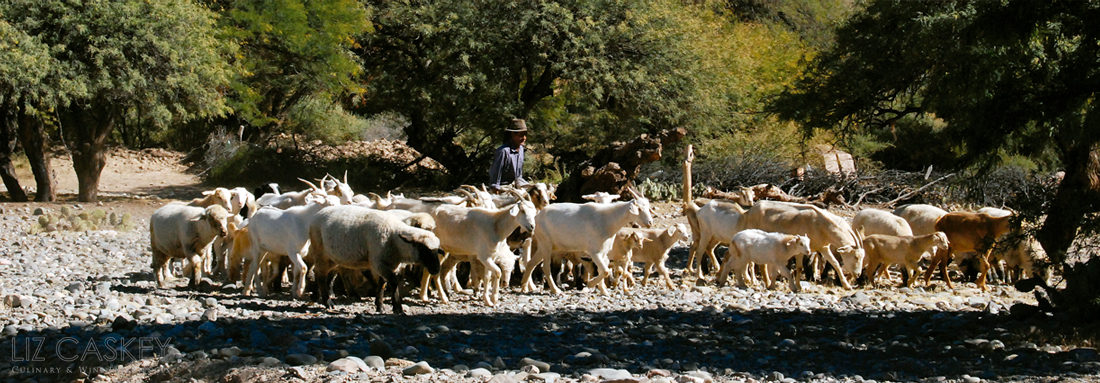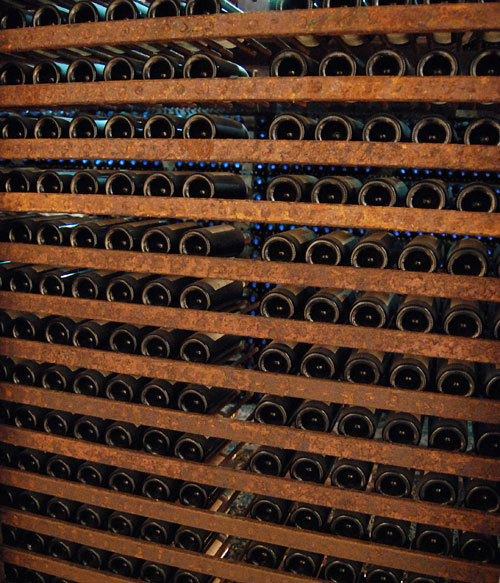Wines are made in every corner of this world. Fermenting grapes is, essentially, something that you can do following a number of predetermined steps, anywhere on the planet (in theory), by anyone who understands the basic process. However, what really makes wines different and not the same as your neighbor’s wine? The experts nod to the concept of terroir, an individual thumbprint of each vineyard and its unique expression. But what happens when we apply this concept to wine tourism, a now emerging industry in Chile and South America? How is this unique expression of wine transmitted to the travelers who fly thousands of miles to experience and get to know the wines first hand? Do they really return with a sensation of authenticity and notion of the place before getting on the plane and returning? Will that sensation of connection and authenticity drive them, once back home, to seek out those wines to relive, through a bottle that experience and memory in Chile? Or is wine tourism just a pleasant, fleeting experience. Another product, nice enough, but just part of waiting to see what’s next. The “Belgium Tuesday, Germany Wednesday”, type of travel. Does wine connoisseur tourism even exist here in South America? In my humble opinion, it depends. It depends where you go, who hosts, what wines you taste, if the wines have been decanted, what you ate for breakfast, and of course, the vibe. Everything counts.
In Chile & Mendoza, something is happening that really worries me. They are looking at Napa as THE model to follow for wine tourism–and I personally don’t think that’s the right approach, at least not blindly without molding it to the local context. That model of tasting rooms, “self service”, enter, sip fast, and leave in five minutes, or worse, “intimate” tours of 20-40 people that taste a medium line wine, judge the wine with one sip, and many times not even being able to hear or capture the vision and concept behind the project. Honestly, that seems more like a rustic country-style bar or wine dispenser. Wine is meant to be appreciated. It is meant to be drank with time and peace. Wine is the result of a much more complex vision, of another human being, of a moment in history, living art if you will. You cannot “get” that in a flash. Drinking a wine is creating the space to truly understand the message inside that bottle. Wine has something to say–if you’ll stop and listen. I see this as a huge differentiation as to where wine tourism is headed in Chile and South America today.
In our business, we do not intend to show that massive and impersonal part of Chilean and Argentinean wine to our clients and wine collectors. No, no, no. What difference is there between that and the wine aisle in the supermarket? Seriously, not very much. Wine tourism is not just about passing around wine glasses with the winery’s name imprinted on it and pouring any old variety and vintage to any old person who drops in, with no reservation, and thinks its fun to stop and sip some wines. For us, it is all about creating an experience that is individual, educational, and transformative on a personal level. Above all, it’s about sharing with the people behind the project whose hands make the wine. The people who day in and day out dedicate their lives, their energy, their passion, their enthusiasm and drive to that vineyard, those vines, the grapes, and the humbling, long process of making wine. They manage infinite variables, giving always their best so the wine can purely express itself. It is a beautiful art and passion that they can bottle, amazingly, so we can savor in our tasting. How cool is that?!!!
Non-massive winery visits are difficult to decorate. They are transparent and evocative, like a good wine. They do not, and cannot, hide anything. While there is amazing architecture in some places, you cannot hide what’s in a wine if you don’t have a love for making it or treat it with love (in serving, hmm, decanting!). Wine speaks the truth and what it’s made of through subtle clues you perceive through your palate. Wine has a personality, like people. Some are big and muscular, others lean and austere, some flowery and boisterous, others restrained and sing like a melody. On a visit, you have the possibility of a direct encounter with the wine, in its place of birth. You see, smell, feel, and connect with its roots. The owner, winemaker, viticulturist, cellar master, all add much to that sabor in the bottle. You connect with the vision behind the project, not just the F.O.B. values and scores. You understand why somebody has bet their entire house to make their d-r-e-a-m a reality, and they invite you in to share that, drink of it. It’s an intimate, human connection through the wine, people, and country of origin like Chile, Argentina, or Uruguay. That memory is so powerful among our guests that, years later, they remember the details and tasting like it was yesterday.
In my experience, this creates a huge loyalty and commitment between the consumer and winery where this sort of wine culture exists. Back from their trips, our clients return to their city and speak of the wines they tried, and how the places are they give birth to them. They then seek out the wines, with importers or distributors, even helping get the wines into the market in some case if they are smaller productions and lesser known. Why? That spark of passion from the trip, and mind-bending wines provoke it. They believe in the winery and its vision. They want to support the project and dream, and to continue to be part of it through partaking in its art (product). Some clients organize theme dinner parties around their travels to showcase the wines to their friends, or generously open special bottles brought back from their trip. They speak in first person of their experience in visiting these places. That is what you call, literally, word of mouth. And news flash for all the South American wineries, this is the best form of marketing that exists to sell your wine. Think about it, how much does an ad campaign cost in Wine Spectator or any other specialized food, wine, or travel magazines? How may consumers stop to see the photograph, read the text, and then act on it?
Truly, wine tourism is not about arriving, having a look, drinking for drinking’s sake, and hitting the road. It is about experiencing a place deeply, connecting with the people and place, but not superficially. It’s not just showing, it’s about sharing a perspective, caring and ultimately, giving to guests. It is such an amazing opportunity for wineries to share their passion for their craft with pride and oomph. but it has to be real, sincere, authentic. Not put together in a Disney Land-esque fashion or focusing on all the money from the tourists that will flock. That’s not the true drive. I hope that the wineries here will seek to share their enthusiasm and what makes this corner of earth so special for their wines, and not just as a big touristic “opportunity”. I encourage them all to seek to create the emotion and connection with visitors, so they can dial in to their wines and purpose. This is good for Chile, Argentina, and Uruguay and ultimately will yield more faithful consumers, who are the best marketers for their wines internationally. While each winery has to interpret in house what’s right for them, I hope that as South America develops its wine tourism that wineries will stop to ponder this before just “copying” Napa, and well, hopefully decide on the side of experience and authenticity not only in the wines–but in the hosting of guests too.
Column published in Revista Placeres, April 2011.














